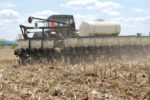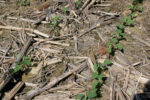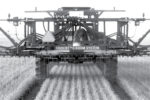Advertise Follow Us
Articles by Phil Needham
Research worldwide shows these systems can boost yields and soil health, and starting the practice in the U.S. isn't as difficult as many no-tillers think.
Read More
Cutting-Edge Planting And Seeding Equipment
Options, flexibility and precision are hallmarks of the new planters and drills unveiled at the 2009 Farm Progress and Big Iron shows
Read More
Sprayer Efficiencies Improve Timing, Boost Profits
Having the proper equipment to apply pesticides and nutrients in a timely manner is critical for your no-till success.
Read More
Removing No-Till Obstacles
Residue managers should move trash so gauge wheels run level, drop seed consistently and produce uniform, high-yielding stands.
Read More
No-Till Or Not — Compacted Soils Compact Profitability
These simple tips can help no-tillers identify, prevent and remedy soil compaction before it makes a dent in their yields.
Read More
Proper No-Till Design Is Critical For Tackling Heavy Residue
There are options for dealing with excessive no-till residue.
Read More
Taking Control Of Your Traffic
Tramlines are an inexpensive way to control traffic patterns, while controlled traffic has greater long-term benefits for no-tillers.
Read More
5 Ways to Improve Your No-Till Corn Planter
Before you drop seed into the ground this spring, consider these planter set-up techniques to improve your planting performance.
Read More
New Technologies Help Deliver Better Efficiency
Products that eliminate seed planting double-ups on end rows or apply only needed nitrogen rates can make no-tillers more profitable.
Read More












